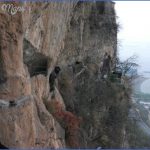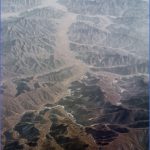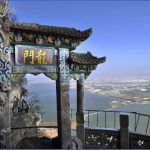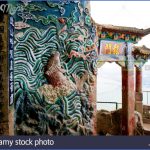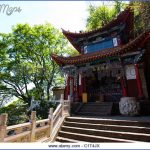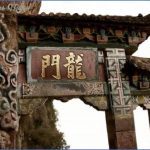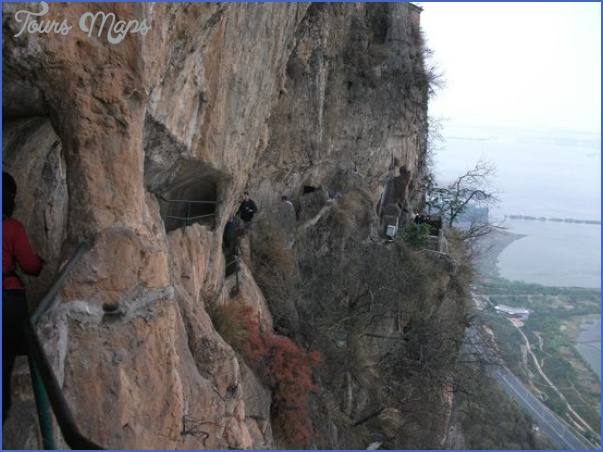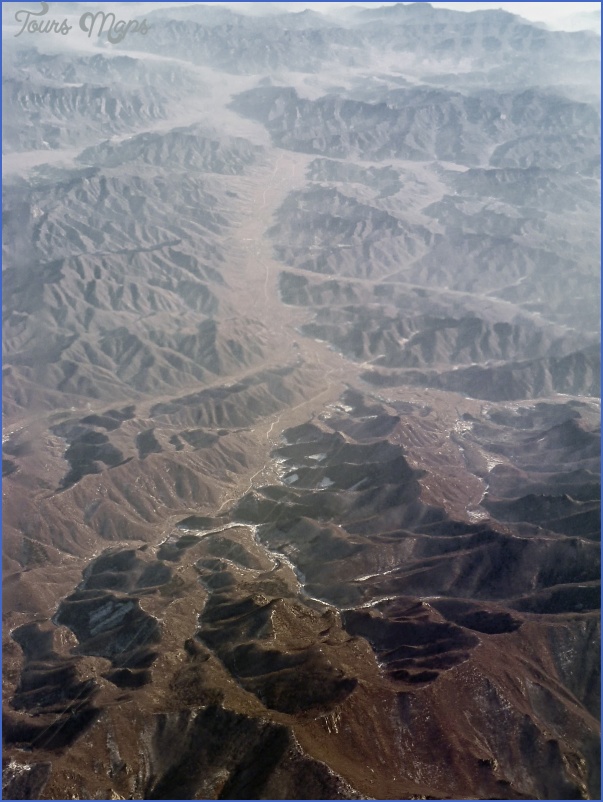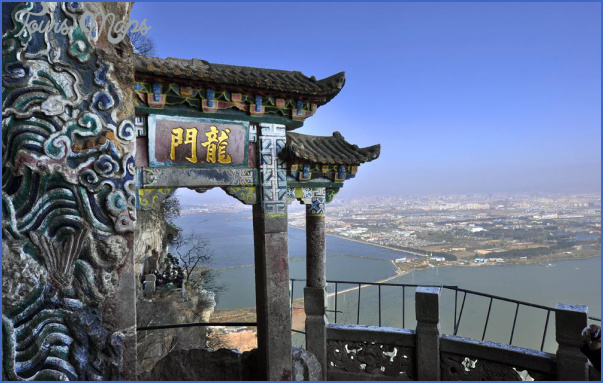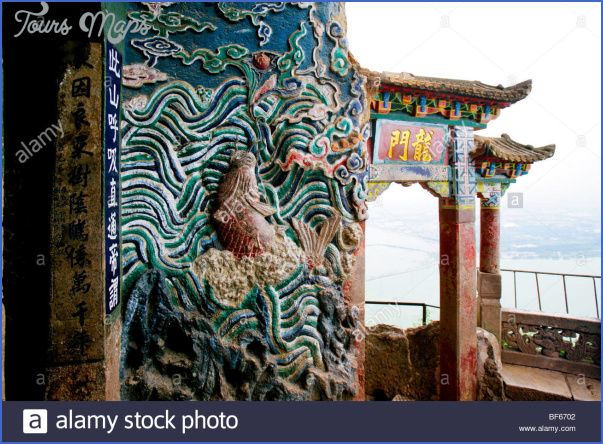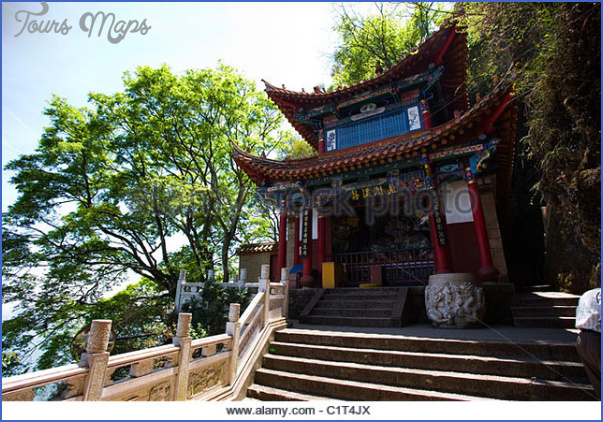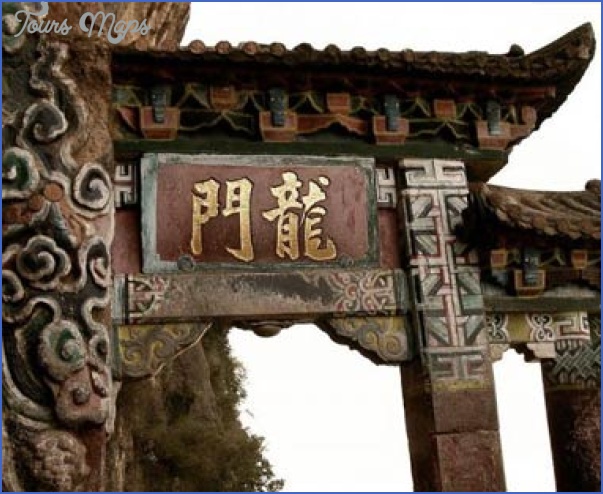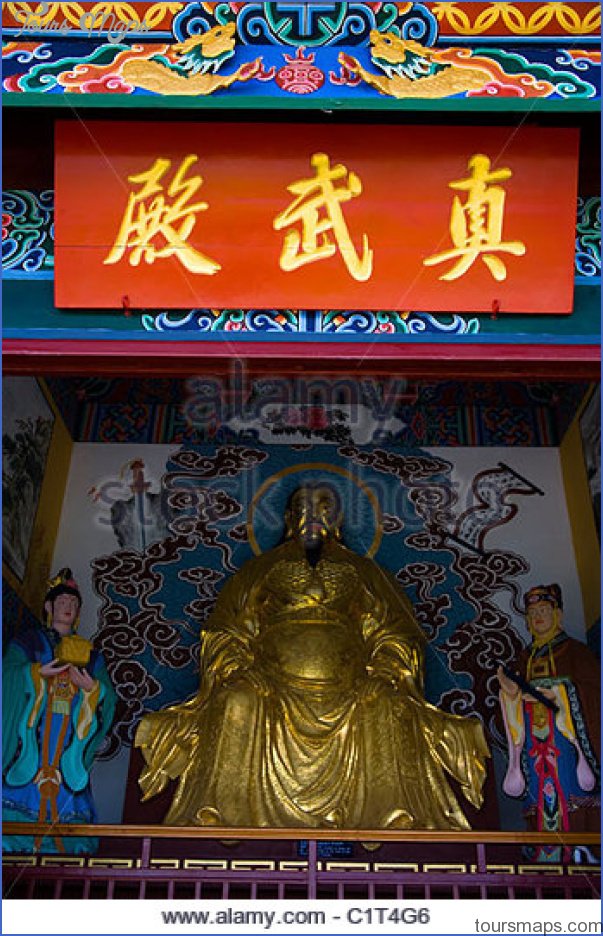The Fragrant Mountain (Xiangshan; 557m/1827ft), rises steeply in the Western Mountains, some 25km/15 miles to the north-west of the city in a park which bears the same name. Its peak is reminiscent of incense burners and, as it is often covered by clouds looking from a distance like smoke, it has been named Incense-burner Mountain (Xianglushan, shortened to Xiangshan). In the summer it is a favourite venue for day visitors because of the cool mountain air. In the autumn, the former imperial hunting preserve is particularly attractive owing to the trees with their glowing red leaves.
In 1186 a temple and a palace were built here. In 1745 under Emperor Qianlong 28 temples, pavilions, pagodas, and villas were erected and this area was surrounded by a wall. The complex was almost completely destroyed in 1860and 1900. It is only due to the restoration work carried out in the past few decades that the former glory ofthe park can be appreciated. The lower station of a lift up to the top of the Fragrant Mountain (Xiangshan) is situated at the northern gate; the main entrance is the eastern gate.
The Spectacle Lake in the northern section of the park actually consists of two lakes connected by a footbridge giving it the appearance of a pair of spectacles.
To the south-west ofthe Spectacle Lake is the Pavilion of Self Examination, with its sickle-shaped pool.
The Temple of Light, situated to the south of the Pavilion of Self Examination, was built in 1780 for the Panchen Lama in the Tibetan style. The archway in front of the temple bears inscriptions in Chinese, Manchurian and Tibetan.
The small seven storey, octagonal Liuli Ta Pagoda lies to the west of the Temple of Light. It is covered in coloured ceramictiles and every storey has little bronze bells which tinkle when the wind blows.
A path leads south past the Lotus Hall (Furong Guan) to the Jade Flower Hill Villa (Yuhua Shanzhuang). To the west is the vantage point of Xishan Qingxue.
The path called “Even the Devil is Afraid” (Gujianchou) leads up to the peak ofthe Fragrant Mountain.
In the south-east ofthe park lie the remains ofthe Xiangshan Temple (with several terraces) dating from 1186.
The Shuangqing Villa stands to the south-west ofthe Xiangshan Temple; it has a pool fed by two springs.
The Temple of the Azure Clouds (1321; temporarily closed for alterations) is situated at the eastern foot of the Fragrant Mountain. In the Ming period (1368-1644) extensions were carried out here by eunuchs who wanted to build themselves a tomb. The Emperor Qianlong had the temple extended in 1748.
Next we passthrough the Mountain Gate (Shanmen) and climbthe steps to the Hall of the Heavenly King (Tianwang Dian), then to the Maitreya Hall (Milefo Dian) and finally to the Pusa Dian Hall in the third courtyard.
Western Mountains Xishan Photo Gallery
Maybe You Like Them Too
- The Best Cities To Visit in The World
- World’s 10 Best Places To Visit
- Coolest Countries in the World to Visit
- Travel to Santorini, Greece
- Map of Barbados – Holiday in Barbados

